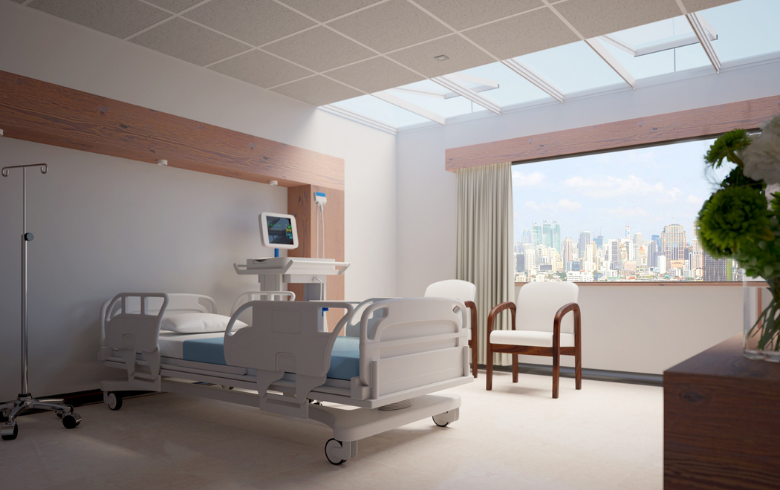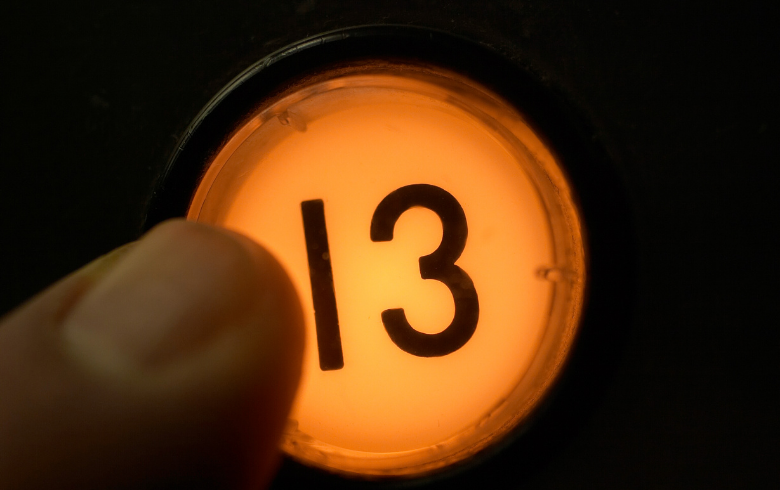Did you know that artificial lighting is one of the largest sources of energy consumption in commercial and industrial applications, accounting for 40% of a building's total energy on average?
But what's the alternative? Every building needs to be lit, right?
Why, it's skylights, of course!
VELUX acrylic skylights have a highly visible light transmittance that has been shown to significantly reduce energy costs through daylighting. In fact, the visible light transmittance is so high with VELUX skylights, artificial lighting can be turned off 70-80% of the time on average.
Want some examples of how skylights have helped keep different types of commercial buildings sustainable and functioning better than ever? We've got some for ya:
Hospitals, Health Care Facilities, and Retirement Communities
According to a recent research study conducted by the Center for Health Design in Concord, California, better lighting and access to natural light can shorten hospital stays. And natural light has been shown to expedite healing and improve personal health overall. This is because a lack of daylight can significantly disrupt the body's internal clock, which is just one of many components that helps keep our bodies functioning like normal.
What's more, the average 60-year-old requires 2-3 times the amount of light the average 20-year-old does. Natural light helps boost visual acuity, especially as we age, and improved lighting decreases fall-related injuries. For good wellbeing and happiness, natural lighting is essential in the places where we go to heal.
Offices, Manufacturing, and Distribution Centers
According to scientific experts, natural light can boost energy up to 24%. In the workplace, this is especially noteworthy as this has been shown to decrease absenteeism and increase productivity. In fact, the National Commission on Sleep Disorders Research estimates that US businesses collectively lose more than $150 billion a year in productivity as a result of employee fatigue due to lack of daylight.
For a more specific example, after Lockheed Martin installed skylights in its facility in Sunnyvale, California, the company saw 15% higher worker productivity and won a $1.5 billion defense contract based on this increase. The profits paid for the entire building and, as an added bonus, Lockheed Martin saves $300,000-$400,000 a year on energy bills.
Using daylight as the primary light source in commercial buildings also greatly reduces the risk of business disruption due to power outages. This has even been shown to improve public health and safety during emergencies when the disruption of the electricity supply may be involved.
Retail Spaces
Skylights in retail spaces significantly and positively correlate to higher sales. A non-skylit store would increase sales by 40% if they incorporated skylights, an HMG study showed, despite the fact that many customers interviewed were generally unaware of the difference between daylight and artificial lighting while shopping. Customers did report that they're more likely to visit skylit stores, citing positive environmental feelings like the stores seeming cleaner, more spacious, and brighter as the reasons why.
Customers aren't the only ones in stores, and they're also not the only ones affected by natural lighting. Employees working in skylit stores have been shown to have increased morale, increased productivity, and decreased absenteeism.
Schools
You've probably guessed where we're going with this, but it's also true: students perform better in schools with skylights. But don't just take our word for it. The Pacific Gas & Electric Company tested 21,000 students in 3 different states and found that students in classrooms with the most daylight progressed 20% faster on math tests and 26% faster on reading tests than those in classrooms with the least amount of daylight over the course of a year.
And according to a report by the National Center for Education Statistics, 72% of energy costs in education buildings goes toward electricity, and 56% of those costs go toward lighting. In other words, America's K-12 schools spend roughly $6 billion on annual energy costs. This cost is second only to salaries and exceeds the amount of spending on computers, supplies, and books. Properly installed skylights in educational buildings can provide energy savings over time while also improving student performance.
The VELUX Advantage
So, now that you've seen all the benefits natural lighting can bring to your commercial projects, why choose VELUX? Because of the VELUX Advantage.
There are four main components to the VELUX Advantage:
- Quality: For more than 75 years, VELUX has been the leader in skylights. We have the highest quality products and the most innovative designs. With our track record, you can trust VELUX skylights to be leakproof and perform well beyond market standards.
- Environmentally Friendly: VELUX skylights are made at an ISO 14001 manufacturing facility, the international environmental standard for manufacturing. Our skylights contain high levels of recycled content, and all products are 100% recyclable.
- National Sales & Support: When you choose VELUX skylights, renowned sales and support network work for you. From lighting design to installation assistance, VELUX is there from project beginning to end no matter where you're located.
- LEED Credits: VELUX skylights can contribute significantly to LEED or other green designs. Contact your local representative or a VELUX customer service representative to obtain supporting documentation.
On top of all of this, a new aspect of the VELUX Advantage is our Sustainability Strategy 2030. Last year, VELUX committed to becoming Lifetime Carbon Neutral, with plans to capture our historical CO2 emissions and reach carbon neutrality by our 100-year anniversary in 2041. Working with WWF International (World Wide Fund for Nature), we aim to achieve this by investing in forest conservation projects and reducing our future carbon emissions from our entire value chain in line with the Paris Agreement's 1.5°C reduction target. Check out our website or the video below to learn more about our strategy:





.png?width=805&name=get%20the%20commercial%20application%20ebooks%20(1).png)